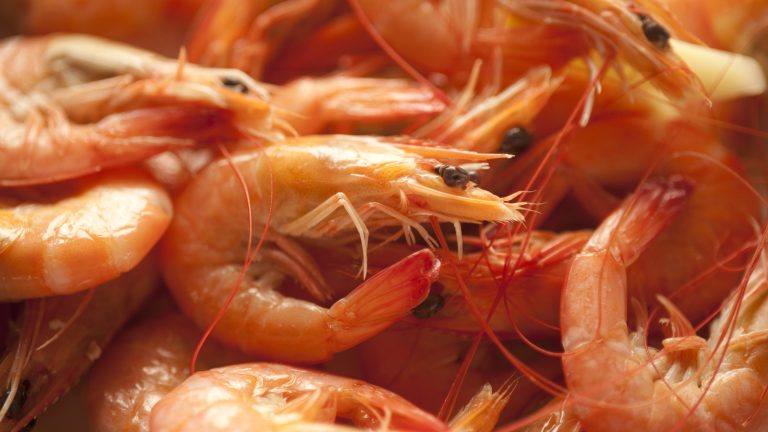Sushi isn’t a single dish, but rather a genre of recipes involving rice and vinegar combined with different toppings. Sushi can have cooked or raw ingredients, with raw seafood being the most popular. This vague terminology can often lead to certain kinds of sushi being mistaken for each other, which can cause confusion when it comes time to order at a restaurant. So that you can order and eat sushi like a pro, we’re going to help you avoid the common blunder of confusing nigirizushi and sashimi.
If you’re at a sushi restaurant and you see a picture of thinly sliced raw tuna or salmon without rice, that’s sashimi. If you see a picture of meat or egg atop a bed of rice, that’s nigiri. Nigiri is a type of sushi, meaning it must include rice as part of the recipe. Sashimi is a technique referring to sliced meat, and it’s distinct from sushi, as it does not include rice. You’ll often see both of these foods on a sushi menu, as both are seafood-oriented dishes that involve attention to detail and handling raw elements.
Nigiri is a type of sushi
Nigiri is a type of sushi where meat, most often raw seafood, is sliced and placed over rice and vinegar. Wasabi is also a popular accompaniment to nigiri, so it’s important to double-check the menu when ordering. Unlike makizushi (the typical seaweed roll popular in the U.S.), nigiri doesn’t pack the toppings inside the rice, nor is it rolled in seaweed sheets. At most, you’ll see a tiny strip of seaweed used as a band to attach the protein to the rice.
The name “nigiri” hails from the Japanese word “nigiru,” a verb meaning to grasp, press, or mold. Nigiri is a couple of inches in length and width, pressed into a rectangular shape by the chef. The ideal way to eat nigiri is with your fingers because the vinegar makes the rice sticky enough to grasp as a single unit.
Nigiri emerged as a dish during Japan’s Edo Period (1603 to 1868 C.E.) in the Kanto region, and it was referred to as “Edomae” sushi because it came from Tokyo (formerly known as Edo). Being near the shoreline allowed for fresh fish to be brought to the city quickly — a luxury that was unavailable before the invention of refrigeration. Nigiri was a convenient dish that bustling Edo citizens could pick up from stalls, and this history endures today, with people now enjoying them in konbinis and fancy restaurants alike.
Sashimi is the art of slicing raw seafood
Sashimi differs from sushi in that it doesn’t require rice, but it does require some form of raw seafood — a true ode to fish itself. Sashimi has been around in some form for several centuries, predating nigiri as a compilation of techniques and preservation methods for eating raw meat. Given this history, sashimi is all about the quality of ingredients, and it takes skill to identify the freshest, most delicious fish and prepare it raw. In Tokyo, you might see restaurant staff lining up for auctions at Toyosu, the world’s largest fish market, to get their hands on prized bluefin tuna.
Once they have the fish in their possession, sashimi chefs take great care in slicing the meat into precise portions without any jagged edges. They’re trained to find, slice, and serve the fattiest and tastiest cuts of raw fish, preparing them in a way that’s safe for people to enjoy without falling ill (although there is always a level of risk involved with consuming raw fish). The name “sashimi” comes from the Japanese kanji “pierced” and “body,” implying the technique. Unlike nigiri, sashimi isn’t a finger food, so you can grab your chopsticks, dip the meat into wasabi or soy sauce, and take in the rich flavor.



![[Upcoming Release] Nigiri vs. Sashimi: The Subtle Distinction Many Japanese Cuisine Enthusiasts Overlook Three nigirizushi with different cuts of fish and wasabi](https://www.chowhound.com/img/gallery/nigiri-vs-sashimi-the-small-difference-many-japanese-cuisine-lovers-miss/nigiri-is-a-type-of-sushi-1747081120.jpg)
![[Upcoming Release] Nigiri vs. Sashimi: The Subtle Distinction Many Japanese Cuisine Enthusiasts Overlook Various cuts of sashimi on plate with wasabi and garnish](https://www.chowhound.com/img/gallery/nigiri-vs-sashimi-the-small-difference-many-japanese-cuisine-lovers-miss/sashimi-is-the-art-of-slicing-raw-seafood-1747081121.jpg)


